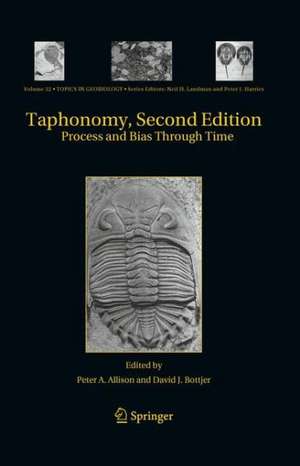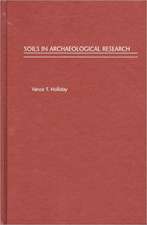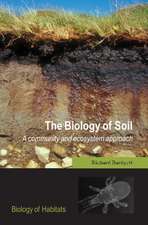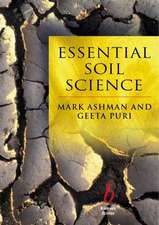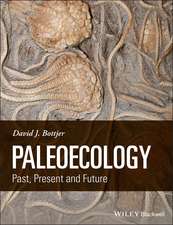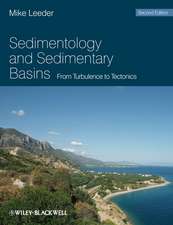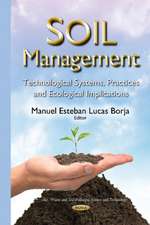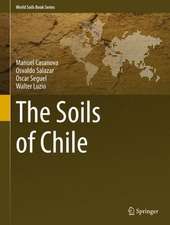Taphonomy: Process and Bias Through Time: Topics in Geobiology, cartea 32
Editat de Peter A. Allison, David J. Bottjeren Limba Engleză Hardback – 4 noi 2010
| Toate formatele și edițiile | Preț | Express |
|---|---|---|
| Paperback (1) | 959.36 lei 6-8 săpt. | |
| SPRINGER NETHERLANDS – 2 ian 2013 | 959.36 lei 6-8 săpt. | |
| Hardback (1) | 964.71 lei 6-8 săpt. | |
| SPRINGER NETHERLANDS – 4 noi 2010 | 964.71 lei 6-8 săpt. |
Din seria Topics in Geobiology
- 18%
 Preț: 1858.10 lei
Preț: 1858.10 lei - 20%
 Preț: 822.09 lei
Preț: 822.09 lei - 15%
 Preț: 672.43 lei
Preț: 672.43 lei - 18%
 Preț: 1236.82 lei
Preț: 1236.82 lei - 15%
 Preț: 647.59 lei
Preț: 647.59 lei - 24%
 Preț: 885.06 lei
Preț: 885.06 lei - 18%
 Preț: 951.59 lei
Preț: 951.59 lei - 18%
 Preț: 964.23 lei
Preț: 964.23 lei - 18%
 Preț: 1117.69 lei
Preț: 1117.69 lei - 15%
 Preț: 633.31 lei
Preț: 633.31 lei - 18%
 Preț: 966.27 lei
Preț: 966.27 lei - 18%
 Preț: 952.54 lei
Preț: 952.54 lei - 18%
 Preț: 949.85 lei
Preț: 949.85 lei - 18%
 Preț: 1013.50 lei
Preț: 1013.50 lei - 24%
 Preț: 821.19 lei
Preț: 821.19 lei - 18%
 Preț: 952.40 lei
Preț: 952.40 lei - 18%
 Preț: 961.23 lei
Preț: 961.23 lei - 18%
 Preț: 952.26 lei
Preț: 952.26 lei - 18%
 Preț: 960.42 lei
Preț: 960.42 lei - 18%
 Preț: 1843.11 lei
Preț: 1843.11 lei - 18%
 Preț: 954.31 lei
Preț: 954.31 lei - 18%
 Preț: 1256.41 lei
Preț: 1256.41 lei - 18%
 Preț: 959.50 lei
Preț: 959.50 lei - 15%
 Preț: 673.60 lei
Preț: 673.60 lei - 18%
 Preț: 954.14 lei
Preț: 954.14 lei - 15%
 Preț: 640.06 lei
Preț: 640.06 lei - 18%
 Preț: 959.36 lei
Preț: 959.36 lei
Preț: 964.71 lei
Preț vechi: 1176.47 lei
-18% Nou
Puncte Express: 1447
Preț estimativ în valută:
184.62€ • 200.47$ • 155.08£
184.62€ • 200.47$ • 155.08£
Carte tipărită la comandă
Livrare economică 23 aprilie-07 mai
Preluare comenzi: 021 569.72.76
Specificații
ISBN-13: 9789048186426
ISBN-10: 9048186420
Pagini: 450
Ilustrații: XII, 600 p.
Dimensiuni: 155 x 235 x 46 mm
Greutate: 1 kg
Ediția:2nd ed. 2011
Editura: SPRINGER NETHERLANDS
Colecția Springer
Seria Topics in Geobiology
Locul publicării:Dordrecht, Netherlands
ISBN-10: 9048186420
Pagini: 450
Ilustrații: XII, 600 p.
Dimensiuni: 155 x 235 x 46 mm
Greutate: 1 kg
Ediția:2nd ed. 2011
Editura: SPRINGER NETHERLANDS
Colecția Springer
Seria Topics in Geobiology
Locul publicării:Dordrecht, Netherlands
Public țintă
ResearchCuprins
1. Taphonomy; 2. Taphonomic overprints on biodiversity; 3. Taphonomy of shelly taxa through time; 4. Taphonomy of shelly taxa through time; 5. Taphonomy of animal organic skeletons though time; 6. Molecular taphonomy of plant organic skeletons; 7. The relationship between continental landscape evolution and the plant-fossil record; 8. Hierarchical control of terrestrial vertebrate taphonomy over space and time; 9. Taphonomy of carbonate microfacies through time; 10. Taphonomy of reefs through time; 11. Silicification through time; 12. Phosphatization through the Phanerozoic; 13. Three-dimensional morphological (CLSM) and chemical (Raman) imagery of cellularly mineralized fossils; 14. Taphonomy in temporally unique settings; 15. Taphonomy in temporally unique settings: the Ediacaran interval; 16. Mass extinctions and changing taphonomic processes.
Recenzii
From the reviews of the second edition:
“Taphonomy remains an essential component in resolving biases inherent in the fossil record … . Allison (Imperial College London, UK) and Bottjer (Univ. of Southern California) assembled an impressive cast of leading authorities for the completely rewritten second edition of Taphonomy … . The text is well written and consistent across chapter authors, and ample illustrations and an extensive index … . Summing Up: Highly recommended. Upper-division undergraduates through professionals/practitioners.” (C. A. McRoberts, Choice, Vol. 48 (10), June, 2011)
“Taphonomy remains an essential component in resolving biases inherent in the fossil record … . Allison (Imperial College London, UK) and Bottjer (Univ. of Southern California) assembled an impressive cast of leading authorities for the completely rewritten second edition of Taphonomy … . The text is well written and consistent across chapter authors, and ample illustrations and an extensive index … . Summing Up: Highly recommended. Upper-division undergraduates through professionals/practitioners.” (C. A. McRoberts, Choice, Vol. 48 (10), June, 2011)
Notă biografică
Peter Allison graduated from the University of Hull with a Geology B.Sc. in 1983. After a short spell as a journalist writing market surveys for Industrial Minerals Magazine he went back to university to do a Ph.D. at the University of Bristol, graduating in 1987. Following post-doctoral positions at the University of Washington’s Friday Harbor Laboratories and the Department of Geology at Kochi University, Japan, he took a faculty position at the Postgraduate Research Institute for Sedimentology at the University of Reading. From there he joined the Earth Science and Engineering Department at Imperial College in 1997.
David J. Bottjer was born in New York City and attended Haverford College outside of Philadelphia (where he majored in Geology at neighboring Bryn Mawr College), and received an M.A. from the State University of New York at Binghamton and his Ph.D. from Indiana University (1978). After leaving Indiana he spent a post-doctoral year with the United States Geological Survey at the Smithsonian Institution in Washington, D.C. He began as Assistant Professor at the University of Southern California in 1979, where he is currently Professor of Earth and Biological Sciences and Chair of the Department of Earth Sciences. He has engaged in extensive professional service through his career, including a past editorship of Palaios, a present editorship of Palaeogeography, Palaeoclimatology, Palaeoecology, and election to the presidency of the Paleontological Society for 2004-2006
David J. Bottjer was born in New York City and attended Haverford College outside of Philadelphia (where he majored in Geology at neighboring Bryn Mawr College), and received an M.A. from the State University of New York at Binghamton and his Ph.D. from Indiana University (1978). After leaving Indiana he spent a post-doctoral year with the United States Geological Survey at the Smithsonian Institution in Washington, D.C. He began as Assistant Professor at the University of Southern California in 1979, where he is currently Professor of Earth and Biological Sciences and Chair of the Department of Earth Sciences. He has engaged in extensive professional service through his career, including a past editorship of Palaios, a present editorship of Palaeogeography, Palaeoclimatology, Palaeoecology, and election to the presidency of the Paleontological Society for 2004-2006
Textul de pe ultima copertă
Taphonomic bias is a pervasive feature of the fossil record. A pressing concern, however, is the extent to which taphonomic processes have varied through the ages. It is one thing to work with a biased data set and quite another to work with a bias that has changed with time. This book includes work from both new and established researchers who are using laboratory, field and data-base techniques to characterise and quantify the temporal and spatial variation in taphonomic bias. It may not provide all the answers but it will at least shed light on the right questions.
Caracteristici
A second edition of a unique volume, covering the extent and style of fossil preservation, previously published in 1991! Focuses on the extent to which taphonomic bias has changed through time in different environments. Includes recent experimental and field studies. Will write the agenda for taphonomic research for the next decade.
